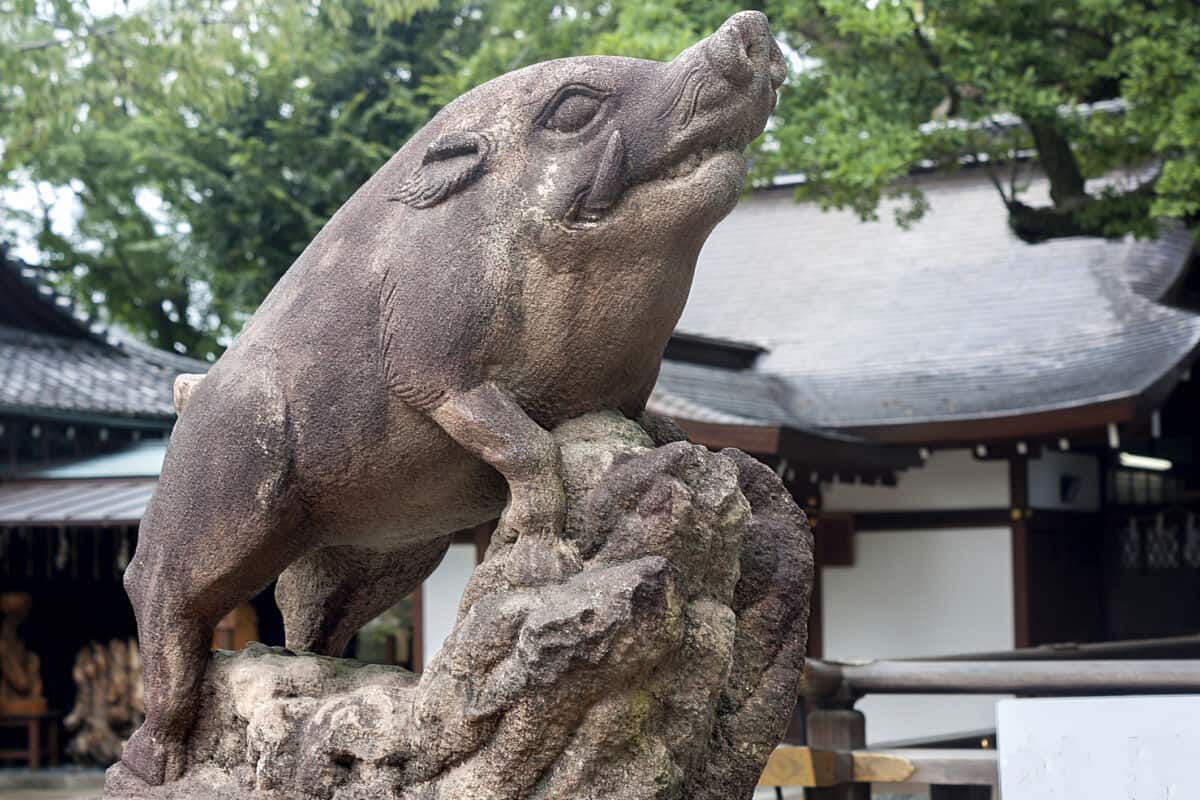Japanese Pork Dishes You’ll Fall in Love With
When we consider Japanese cuisine, we think of fish, seafood, and maybe chicken or even Kobe’s famous beef. But do you know pork is incredibly popular in Japan? As a matter of fact, they prefer it only second to their prized sushi and seafood delicacies. It’s readily available and much cheaper than beef.
Here are the top 13 Japanese pork dishes you’ll fall in love with. The following list is an amazing array of delectable Japanese dishes that contain a variety of pork. You can try making these at home or keep your eye out for them when visiting Japan.
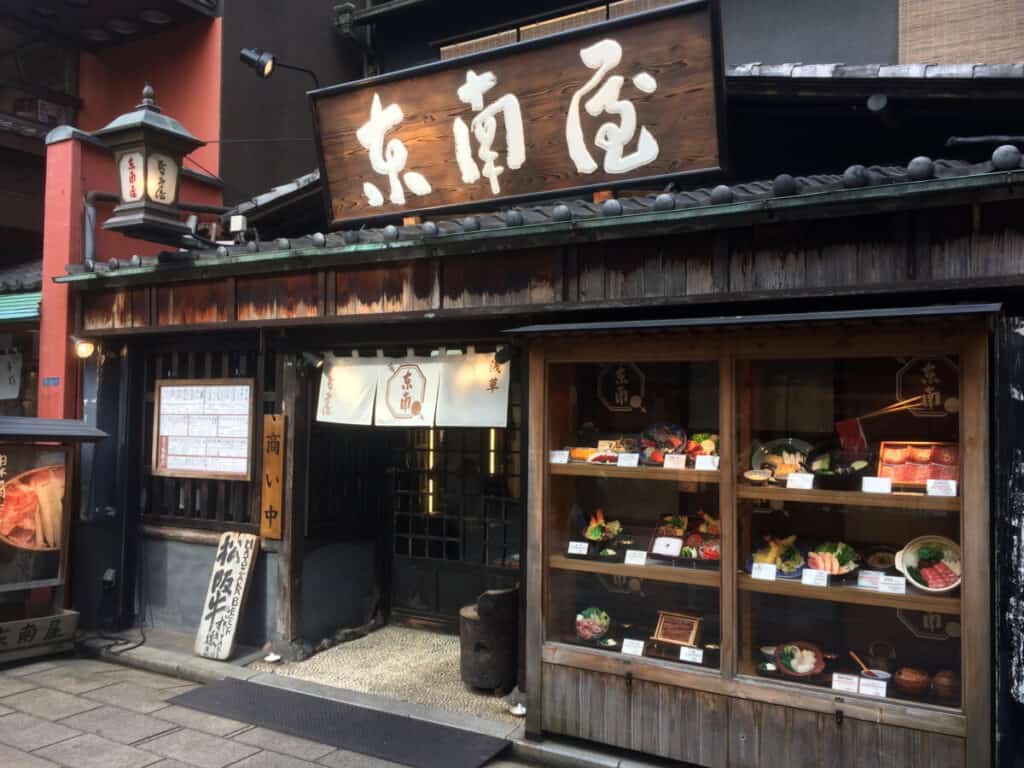
Quick Overview
- Butadon (pork bowl)
- Japanese Hamburger (a meatloaf-like mix of ground pork and beef with eggs and panko)
- Shabu Shabu (stewed or braised pork)
- Yakiton (skewered pork that’s grilled)
- Buta-Maki (bacon wrapped veggies and pork on skewers)
- Tonkatsu (breaded pork cutlet)
- Tonkontsu Ramen (classic ramen soup with barbecued pork)
- Shogayaki (grilled pork loin)
- Nikujaga (pork and potatoes simmered in dashi broth)
- Motsu (organ meat)
- Gyoza (ground pork dumplings)
- Kakuni (stewed cubes of pork belly)
- Goya Chanpuru (stir-fried pork)
1. Butadon
Butadon is a pork bowl that’s very popular in Japanese cuisine and comes from the region around Obihiro. Most notably, sources place the credit on Mr. Abe with his invention.
He supposedly made this in 1933 due to the Japanese’s desire to consume more pork. The words buta (“pork”) and don (“bowl”) make up Butadon. You can therefore translate it literally to “pork bowl.”
There is pork thinly sliced with onions simmered in a broth made of a slightly sweet soy sauce and cooked until superbly tender. The pork sits on top of rice in a donburi bowl with Japanese vegetables, usually green peas.
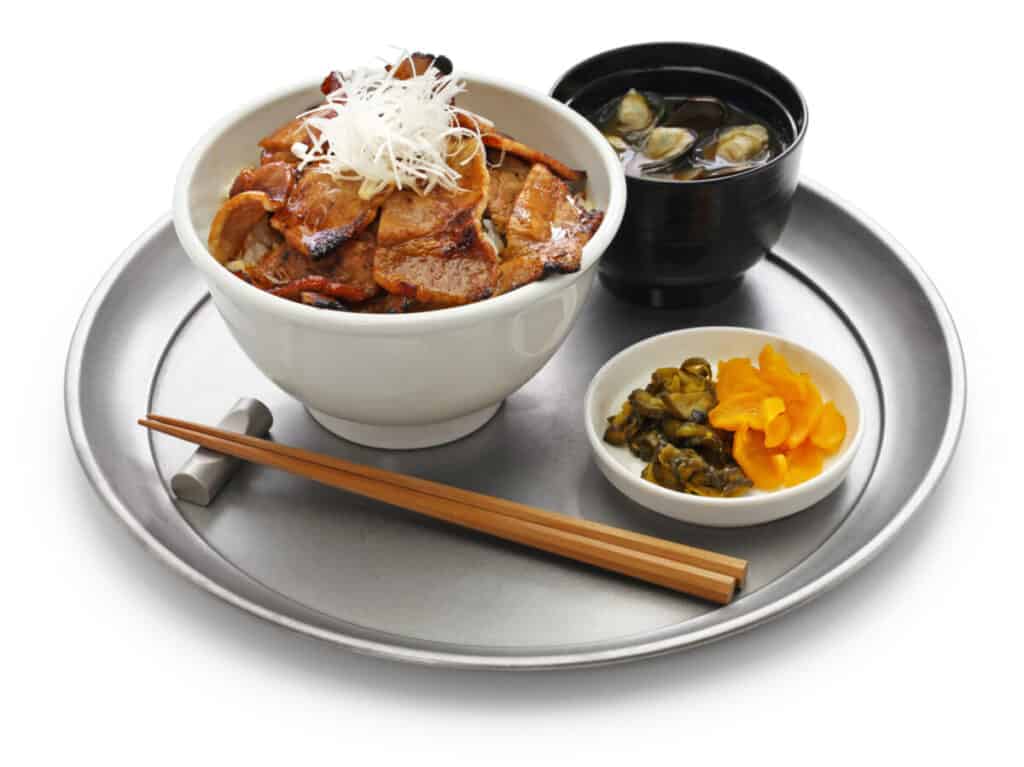
2. Japanese Hamburger
The Japanese Hamburger, or just Hamburg, a food that developed in Japan after World War II due to the arrival of western influence.
It combines ground beef and pork to provide a great-tasting version of this all-American and German classic. But has its own flair that only the Land of the Rising Sun could have devised.
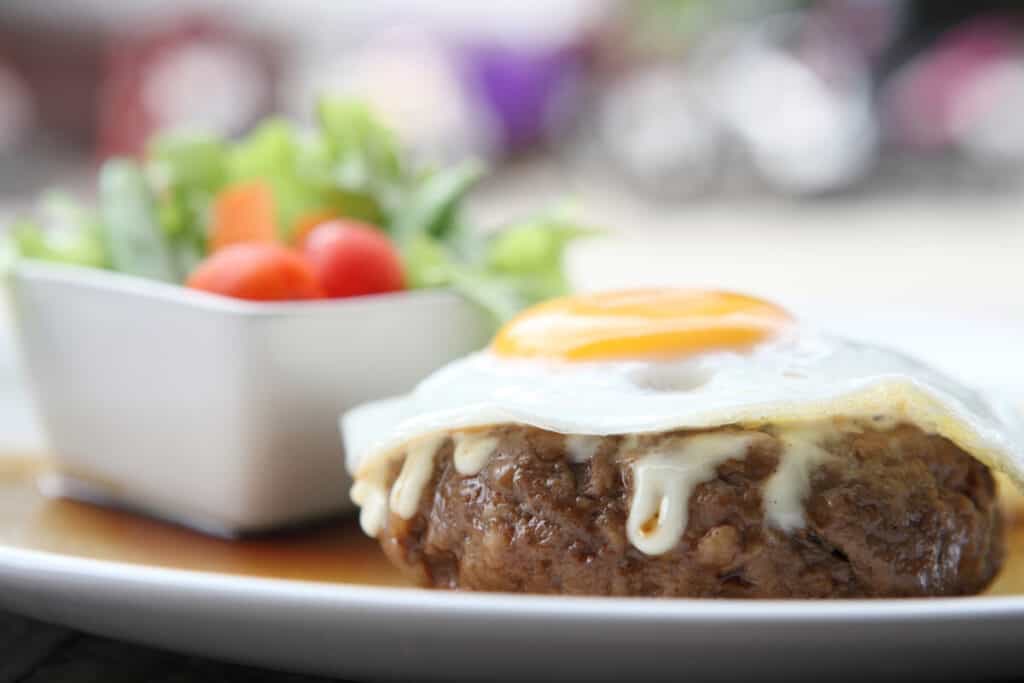
While this isn’t the typical American burger that sits between buns of bread, it’s more like a meatloaf texture. This is due to the bread crumbs (usually panko) and eggs that mix in with it.
It’s what makes this soft and light enough to eat with chopsticks. This is a common home-cooked dish in Japan, but you can also find it in local restaurants too.
3. Shabu Shabu
Shabu Shabu, which means “swish, swish” in Japanese, is a fabulous dish that features thinly sliced pork. This includes bite-sized veggies lightly cooked in a Shabu Shabu broth. You can also eat this with beef but pork is the most common meat featured.
In the summertime, you’ll find Rei-Shabu, which is buta shabu meat. This is chilled pork specifically served cold over a salad or cold noodles.
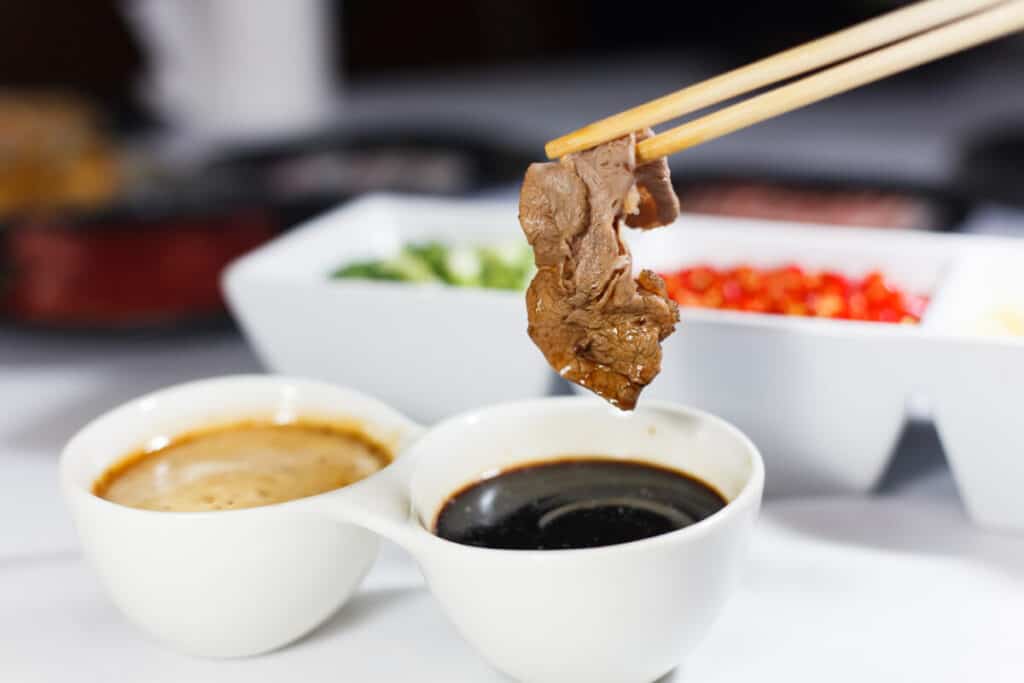
4. Yakiton
Yakiton is essentially skewered pork pieces that are then cooked on a grill. The Japanese also call this Butakushi or Buta no Kushiyaki. This is actually a type of dish that comes in a wide variety depending on the cuts of meat the skewer comprises. In Japan, they do not waste any part of the animal.
Different Yakiton Indicates the Animal Part
This means the different types indicate which part of the animal the meat comes from. This includes anything from the head down to the tail.
Some of these parts are delicacies in Japan and provide all the flavors of a diverse meal. You can eat these as a whole course, with vegetables and rice, or as a simple snack.
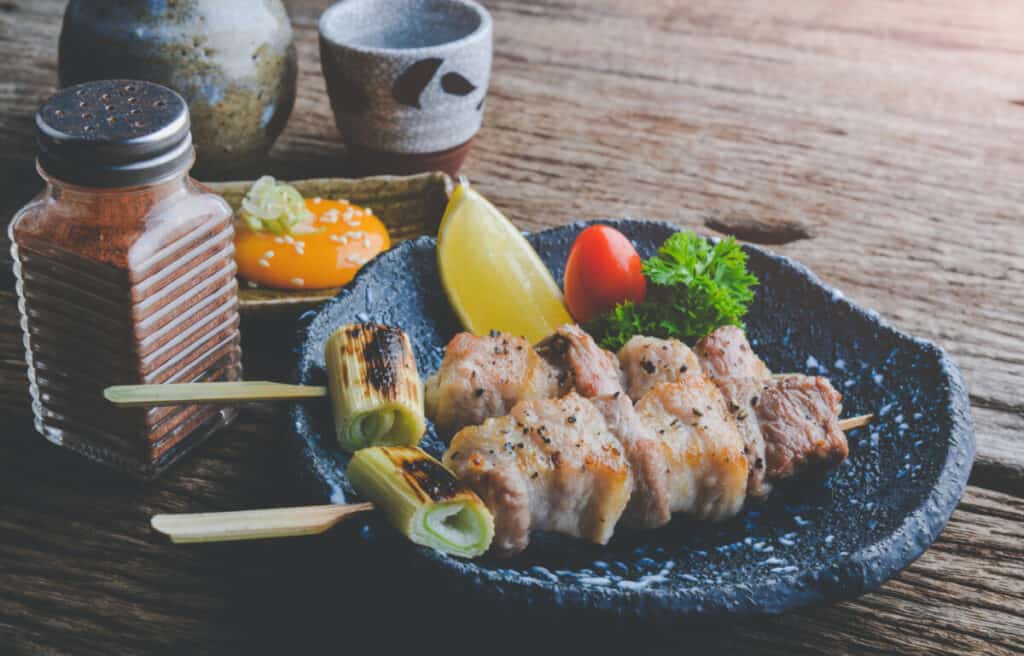
Yakiton skewers typically have seasonings with salt or tare sauce and people often eat them with other condiments. Things like ground citrus and pepper, miso paste, wasabi, sansho pepper, fresh lemon or schichimi togarashi are perfect accompaniments.
There are about 10 to 20 different kinds of Yakiton, but the most popular is Buta Bara. This is a skewer that contains a bacon-like pork belly that grills to a light and delightful crunchy texture.
However, there are a number of fusion combos that include things like Buta Mochi (rice cakes wrapped in pork), Asupara Bacon (bacon-wrapped asparagus), or cherry tomatoes wrapped in bacon.
Most Common Yakiton
The 10 most common varieties of Yakiton are:
- Buta Bara – Pork Belly: This is thickly-sliced uncured bacon grilled until the fat is crispy and served with a bit of salt and fresh-squeezed lemon.
- Kashira – Pork Jowl: This is the meat found around a pig’s cheeks and temple. It provides a firm and dense texture that tends to be very juicy.
- Hatsu – Heart: This is an organ-meat skewer that’s often an accompaniment to drinking alcohol. It has a firm, springy texture that doesn’t have a strong odor or flavor.
- Reba – Liver: The liver is an organ meat high in protein and iron as well as being low in fat. It’s only cooked so the outside is crispy but the inside is rare which provides a creamy texture to the meat.
- Harami – Diaphragm: This is a very thin cut of meat with a chewy texture. It’s very tender and served with miso tare sauce. Most English-speaking people will recognize this cut as “flank steak.”
- Shiro – Intestine: This turns white when cooked, hence the name which means “white.” It comes char-grilled with a little sea salt and a garnish of ponzu citrus soy sauce.
- Tan – Tongue: This part of the pig is often chewy but the Japanese slice it so thin that it makes it more palatable. With just the right amount of fresh-squeezed lemon, it brings out the meat’s delicate and mild flavor.
- Teppo – Rectum: This section of the intestines tends to be springy with a bold flavor and often grilled with miso paste.
- Kutubera/Nodo Nankotsu – Cartilage: This is a crunchier meat that comes specifically from the throat of the animal. This is high in collagen and makes for a tasty snack in Japan while enjoying a bit of alcohol.
- Ami-Hatsu ; Ami-Reba – Fat-Wrapped Heart ; Liver: These are pork hearts and livers wrapped in a net of fat that adds flavor and richness.
5. Buta-Maki
This is sort of like Yakiton, in that Buta-Maki is grilled with the pork skewered. But, you can also cook it via steaming or pan-frying.
However, the real difference is in how the meat or other ingredients have a wrapping of something over it. For instance, cherry tomatoes may have bacon wrapped around them or the pork has a shiso (perilla) wrapping.
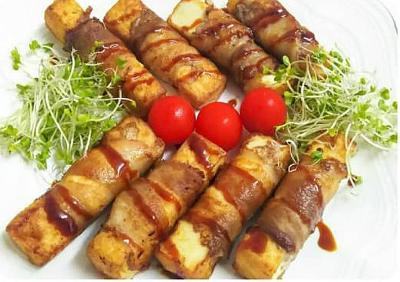
6. Tonkatsu
Yet another popular dish you can find almost anywhere in Japan is Tonkatsu. This is a breaded pork cutlet in panko crumbs and then undergoes deep frying.
You’ll often find it served with one of three different types of brown sauce along with rice, raw cabbage, and miso soup.
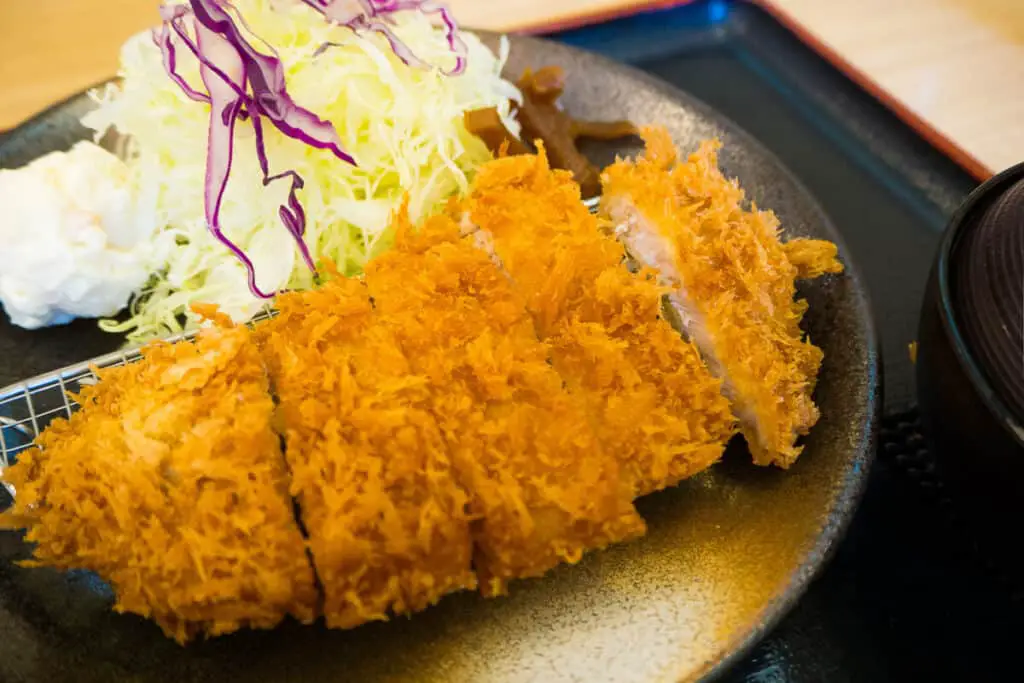
There are also several variations of this dish:
- Katsudon – sliced pork comes on top of hot rice with egg and onions
- Katsu Curry – rice and thinly sliced pork with Japanese-style curry
- Katsu Sando – brown sauce and thinly sliced pork in a white bread sandwich
7. Tonkotsu Ramen
Hailing from the Hakata region in the northern prefecture of Kyushu, Tonkotsu Ramen is one of the top three kinds of ramen dishes throughout Japan.
Originally, it was a bowl of creamy bone soup made from pork and eaten with straight but thin noodles. The noodles are al dente and filled with sliced scallions and barbecued pork char slu, which is very tender and juicy.
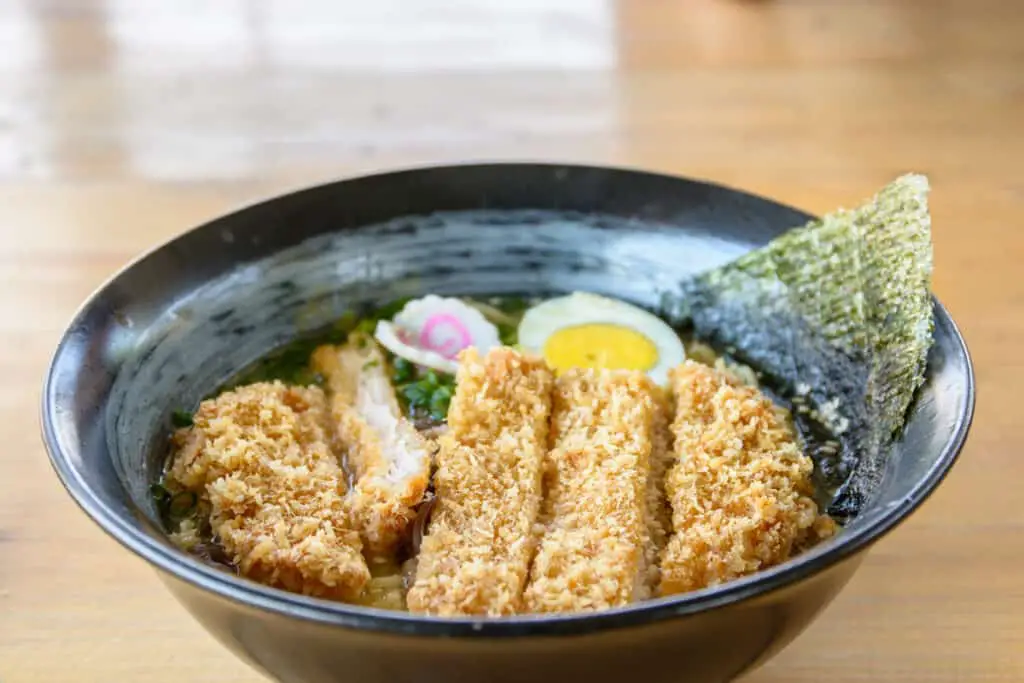
8. Shogayaki
One of the easiest Japanese dishes to make at home is Shogayaki. This is one of those items you’ll see in favorite bento boxes around Japan. It comprises either grilled or pan-fried pork loin cooked with sake, soy sauce, ginger, and mirin.
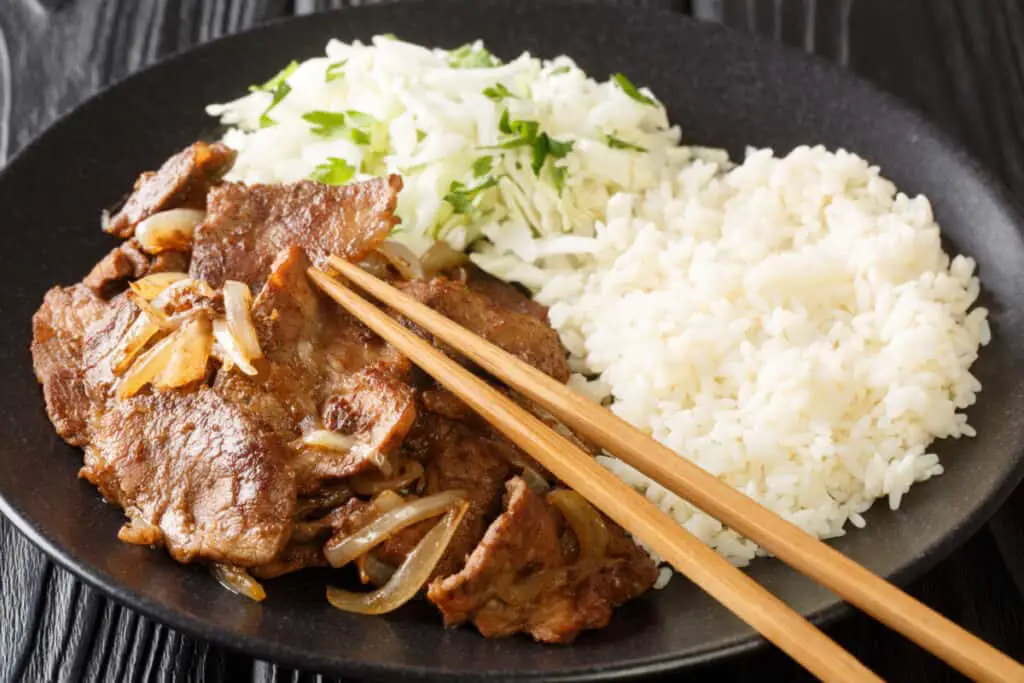
9. Nikujaga
Considered one of Japan’s greatest and most typical homemade comfort foods, Nikujaga is a classic potato and pork type of dish.
It comes with thinly sliced pork simmered in dashi broth and soy sauce along with vegetables. You will also see it served with things like miso soup, several vegetable-based side dishes, and, of course, hot rice.
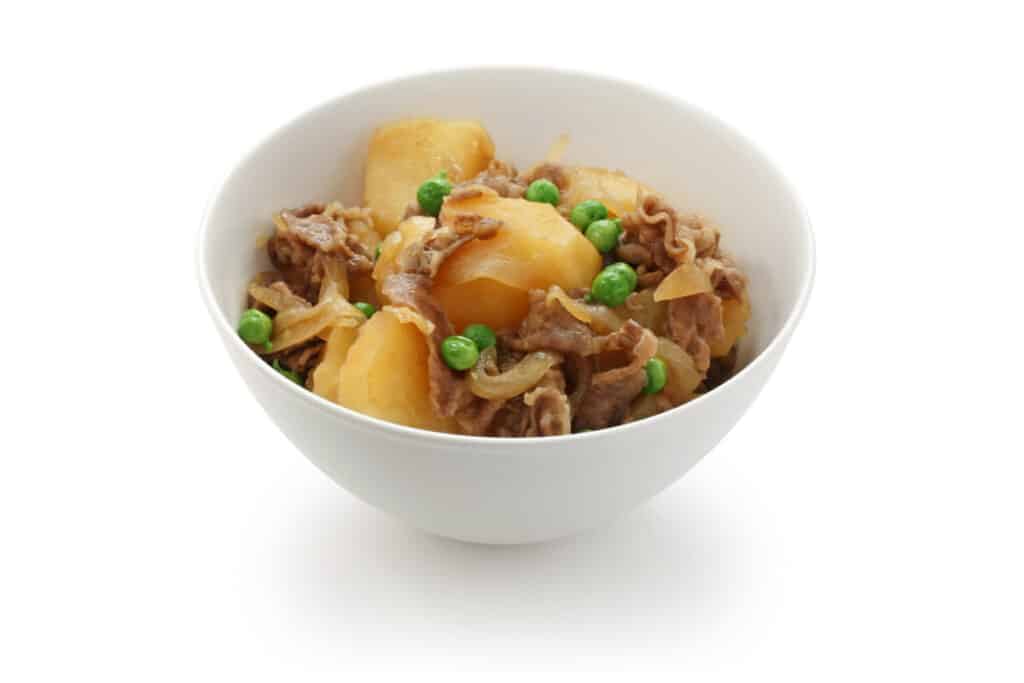
10. Motsu
In Japan, Motsu is a term that refers to the innards of the pig, such as the heart, kidneys, intestines, and liver. There are several ways to eat and prepare this apparent type of delicacy.
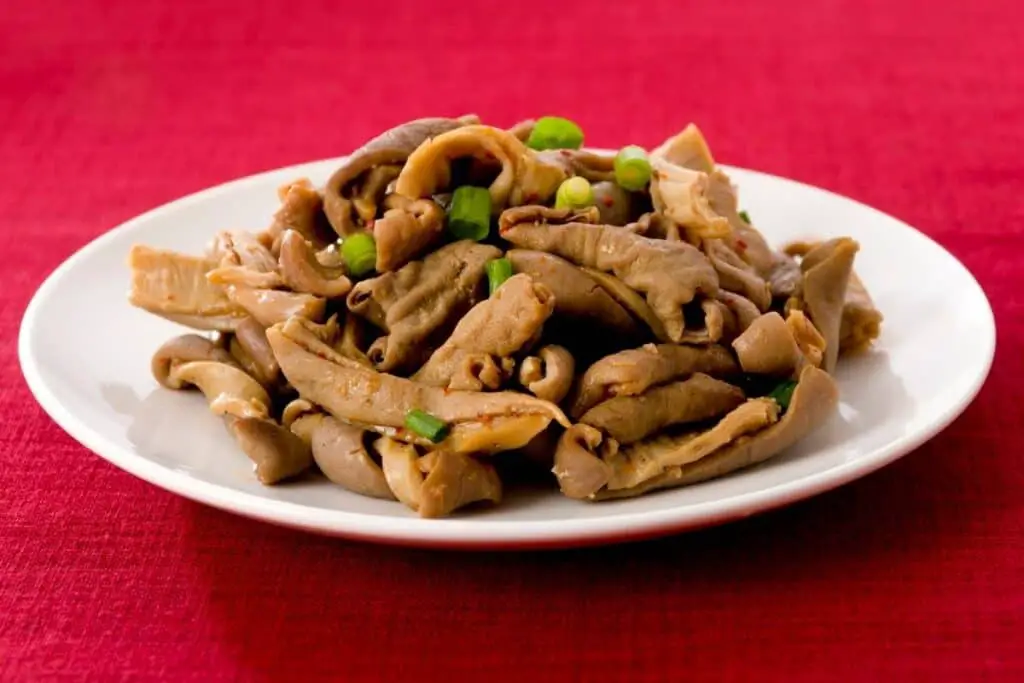
- Motu Nabe – well-seasoned hot pot dish with a strong tasting broth that features garlic, miso, soy sauce or chili. This is a good dish to accompany a night of drinking alcohol with friends and family.
- Mostu Nikomi – braised pork giblets
- Horumon Yaki – marinated and grilled pork intestines; recommended as an accompaniment with sake or beer
- Motsu Yaki – the grilled pork innards
11. Gyoza
Many people have heard of Gyoza as being a specialty dumpling dish from China. However, Japan has its own version that gives the Chinese a run for their money.
This was a favorite among Japanese soldiers while serving in China, so when they returned, they introduced their own version to the country.
Often filled with things like vegetables and minced pork, you can find other ingredients like fish, seafood, beef, and others.
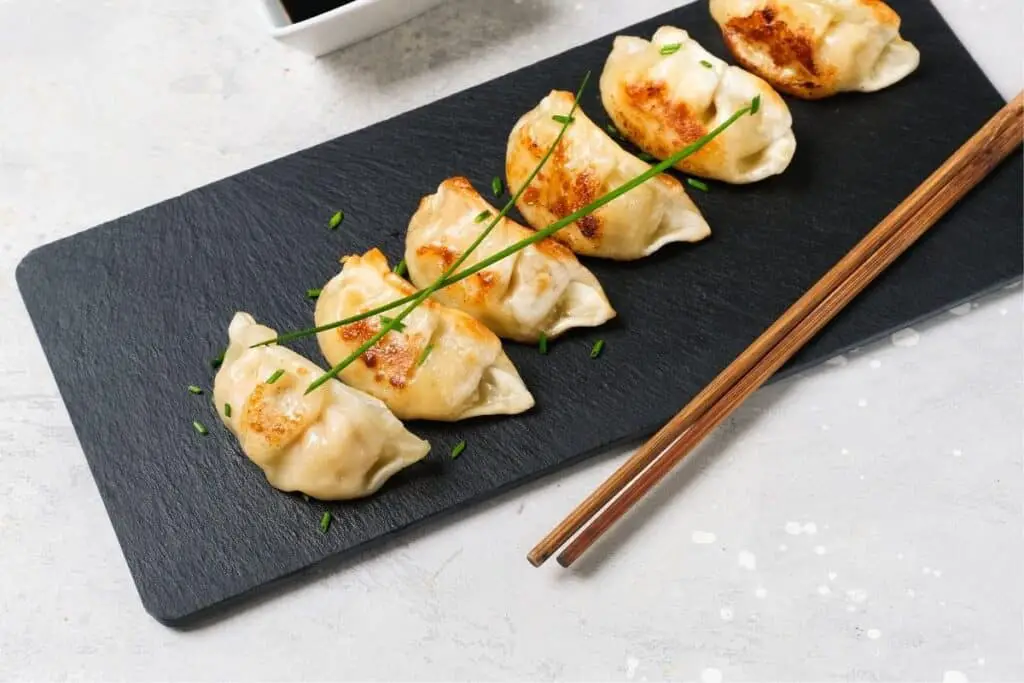
12. Kakuni
Kakuni, meaning “square simmered,” is pork belly cubes slowly stewed or braised. It cooks so long that it melts in your mouth when you eat it. It’s rich, tender, and absolutely delicious.
Also known as Rafute, it’s a dish held in high regard throughout Okinawa Island. There are theories that this originated from Dong Po Ru, a Chinese dish.
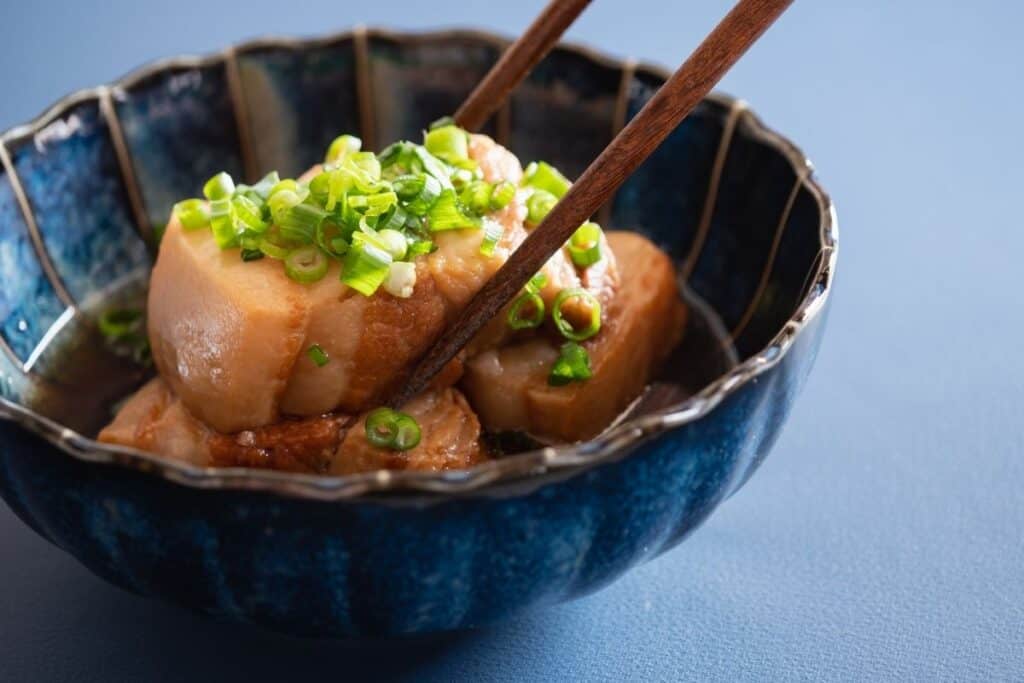
The stew that comprises this contains things like soy sauce, black sugar, and awamori (a distilled liquor specifically from Okinawa).
As the thick slices of pork simmer, the fat becomes gelatinous via the sugar and liquor. When cooked, it literally falls apart. It often comes with noodles or rice as well as a refreshing glass of ice-cold beer.
13. Goya Chanpuru
Chanpuru is a category within Japanese cuisine that involves a large array of dishes. Goya Chanpuru is the most traditional of these.
It contains pork, eggs, tofu, and stir-fried bitter melon. It also has a variety of vegetables and seasonings. Sometimes, it will have things like fish flakes and rice too.
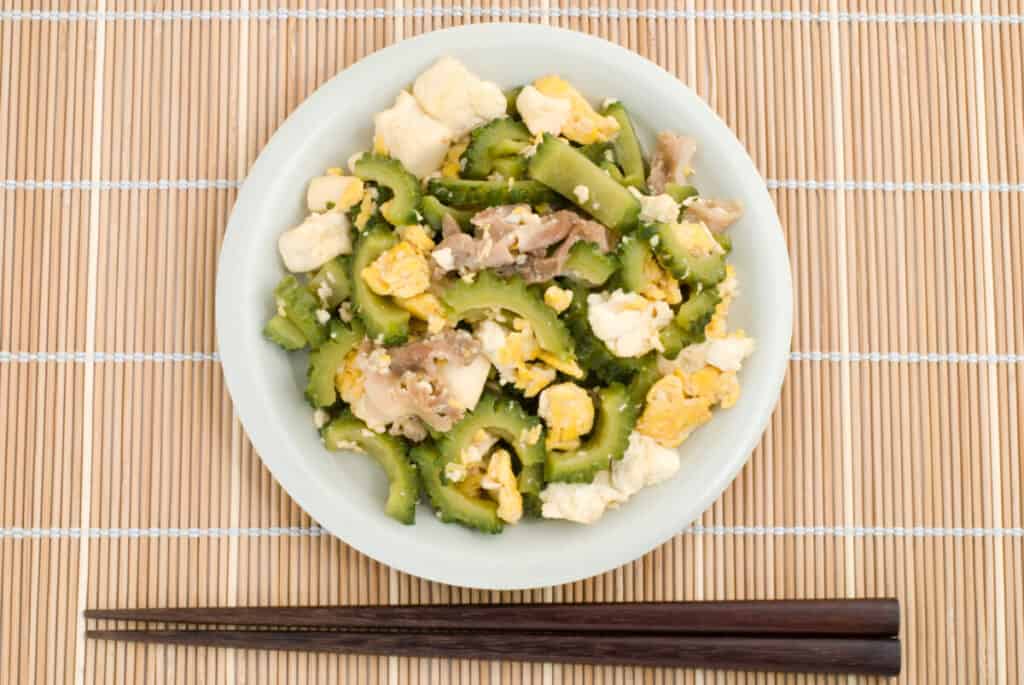
It’s a highly nutritious and colorful summertime food, most often found in Okinawa. It regained popularity in recent years and is often found in the more dense and populated areas of Japan.

